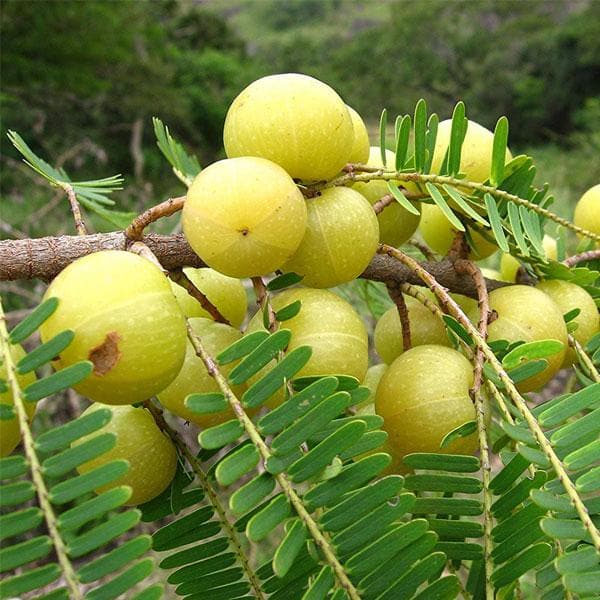
Amla
Amla, scientifically known as Phyllanthus emblica, is a small to medium-sized deciduous tree native to the Indian subcontinent
It holds a special place in traditional medicine systems like Ayurveda, where it has been used for centuries due to its numerous health benefits.
Amla is also commonly referred to as Indian gooseberry.
The fruit is small and green, with a tangy and sour taste. It is a rich source of vitamin C, antioxidants, and various minerals.
Amla's versatility, nutritional value, and historical significance make it a valuable ingredient in both traditional and modern wellness practices.
Botanical Characteristics.
1. Amla trees typically grow to a height of 8 to 18 meters, with a crooked trunk and spreading branches.
2. The leaves are simple, pinnate, and closely spaced along the branches.
3. The small, pale green flowers are inconspicuous and have a strong, pleasant fragrance.
4. The fruit of the Amla tree is round and fleshy, with a light green to yellowish color when ripe.
Nutritional Profile.
1. Amla is renowned for its exceptionally high vitamin C content, which is higher than that of many other fruits. Vitamin C is a powerful antioxidant that supports the immune system and promotes skin health.
2. It also contains other essential vitamins and minerals, such as vitamin A, vitamin E, vitamin B complex, calcium, phosphorus, and iron.
3. Amla is low in calories and fat, making it a healthy addition to the diet.
Health Benefits.
1. Antioxidant Properties:
Amla is rich in antioxidants that help protect the body from oxidative stress and prevent cell damage.
2. Immune System Support:
The high vitamin C content in Amla boosts the immune system, helping the body fight off infections and illnesses.
3. Digestive Health:
Amla supports digestion, reduces acidity, and helps alleviate common gastrointestinal issues.
4. Hair Health
Amla is a popular ingredient in hair care products due to its ability to strengthen hair, promote hair growth, and prevent premature graying.
5. Skin Care:
The antioxidants and vitamins in Amla contribute to healthy skin by reducing signs of aging, promoting a radiant complexion, and preventing acne.
6. Heart Health:
Amla may help lower cholesterol levels, regulate blood pressure, and support overall cardiovascular health.
7. Diabetes Management:
Some studies suggest that Amla may help regulate blood sugar levels and improve insulin sensitivity.
Forms of Consumption.
1. Fresh Amla fruit can be consumed as is, although its sour taste might be intense for some.
2. Amla is often used to make jams, preserves, pickles, and chutneys.
3. Amla juice is a popular health drink that can be diluted with water.
4. Amla powder, derived from dried Amla fruits, is a versatile ingredient used in culinary dishes, beverages, and herbal remedies.
Precautions.
1. While Amla is generally safe for consumption, excessive consumption may lead to digestive discomfort due to its sour taste.
2. If you have underlying medical conditions or are taking medications, it's advisable to consult a healthcare professional before incorporating Amla into your diet or using it for therapeutic purposes.
Conclusion.
Amla is a nutrient-rich fruit with a wide range of health benefits. Its rich antioxidant content, especially vitamin C, makes it a valuable addition to a balanced diet. Whether consumed fresh, as juice, or in powdered form, Amla offers a natural way to support overall health and well-being. As with any dietary supplement, moderation and consultation with a healthcare professional are key.

